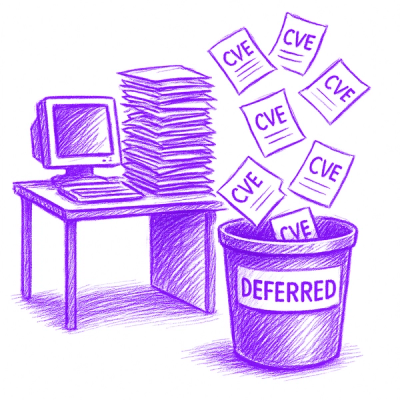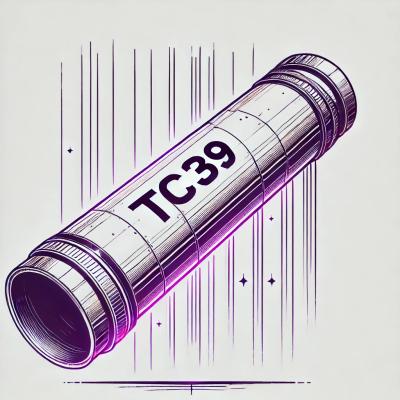
Security News
NVD Quietly Sweeps 100K+ CVEs Into a “Deferred” Black Hole
NVD now marks all pre-2018 CVEs as "Deferred," signaling it will no longer enrich older vulnerabilities, further eroding trust in its data.
This is the README of pydwf, a Python package to control the Digilent Waveforms lineup of electronic test and measurement devices made by Digilent.
It wraps all functions of libdwf, the low-level C library provided by Digilent, in an easy-to-use, class-based Python API. Like the C library, the pydwf package supports Windows, Linux (Intel and ARM), and macOS. The libdwf library is automatically installed as part of Digilent's Waveforms software, which can be downloaded from here (official link, with mandatory email harvesting) or here (non-official link, without email harvesting).
The current release of pydwf is version 1.1.19. It is based on version 3.20.1 of libdwf, but it should also work with other versions.
The pydwf package comes with documentation and a number of ready-to-run examples that demonstrate how pydwf can be used to perform common and not-so-common tasks.
A command-line tool is provided that can be used, among other things, to list the available Digilent Waveforms devices and their configurations.
This README file contains information about the project. Readers who want to learn how to use pydwf are referred to the API documentation.
The following devices can be controlled using pydwf:
The pydwf package has been extensively tested with the Analog Discovery 2, Digital Discovery, and ADP3450 devices. It should also work with the other devices listed, but these haven't been tested. If you have such a device and encounter problems, please report an issue on the GitHub issue tracker.
The pydwf package requires Python 3.6 or higher.
In order for pydwf to work, recent versions of the Digilent Adept and Digilent Waveforms packages must be installed. These provide the C libraries that pydwf uses to interact with devices. Generally speaking, if the Waveforms GUI application provided by Digilent works on your system, you're good to go.
pydwf depends on the numpy package to handle the considerable amount of data transferred between the PC and Digilent devices when performing high-speed signal generation or capture operations.
Some of the examples depend on the matplotlib package, but pydwf itself will work without it.
The project repository and issue tracker are hosted on GitHub:
https://github.com/sidneycadot/pydwf/
The installable package is hosted on PyPI:
https://pypi.org/project/pydwf/
This allows installation using the standard pip (or pip3) tool:
pip install pydwf
After installing pydwf, the following command will show the version of pydwf and the underlying DWF library:
python -m pydwf version
After installing pydwf. the following command will list all Digilent Waveforms devices connected to the system and, for each of them, list the supported configurations:
python -m pydwf list -c
The project documentation is hosted on Read the Docs. The latest version can be reached via the following link:
https://pydwf.readthedocs.io/en/latest/
If desired, the documentation can also be installed locally after installing the package by executing the following command:
python -m pydwf extract-html-docs
This will create a local directory called pydwf-docs-html containing the project documentation in HTML format.
Alternatively, a PDF version of the manual can be extracted as well:
python -m pydwf extract-pdf-manual
The Python examples can be installed locally after installing the pydwf package by executing the following command:
python -m pydwf extract-examples
This will create a local directory called pydwf-examples containing the Python examples that demonstrate many of the capabilities of the Digilent Waveforms devices and pydwf.
These examples are intended as a useful starting point for your own Python scripts. See the Examples overview for more information.
Many thanks to Digilent for making the awesome Waveforms devices, and to provide not only the very capable Waveforms GUI software, but also the cross-platform SDK on which pydwf is based. Great work!
My company Jigsaw B.V. supported the effort to make pydwf. If you need any kind of high-tech software (with or without Digilent Waveforms devices), and you’re somewhat in the vicinity of Delft, The Netherlands, give us a call.
Thanks to my longtime friend Pepijn for proof-reading the documentation and providing his perspective on several issues that came up while implementing pydwf. The package is a lot better because of your help.
Lastly, thanks to Petra for your patience with having all kinds of electronics equipment in the living room while developing this package (and before, and after, …). You may not share my enthusiasm for this particular hobby, but I am very fortunate that you are at least enthusiastic about my enthusiasm, if that makes sense.
— SC
FAQs
A package to control Digilent Waveforms devices
We found that pydwf demonstrated a healthy version release cadence and project activity because the last version was released less than a year ago. It has 1 open source maintainer collaborating on the project.
Did you know?

Socket for GitHub automatically highlights issues in each pull request and monitors the health of all your open source dependencies. Discover the contents of your packages and block harmful activity before you install or update your dependencies.

Security News
NVD now marks all pre-2018 CVEs as "Deferred," signaling it will no longer enrich older vulnerabilities, further eroding trust in its data.

Research
Security News
Lazarus-linked threat actors expand their npm malware campaign with new RAT loaders, hex obfuscation, and over 5,600 downloads across 11 packages.

Security News
Safari 18.4 adds support for Iterator Helpers and two other TC39 JavaScript features, bringing full cross-browser coverage to key parts of the ECMAScript spec.